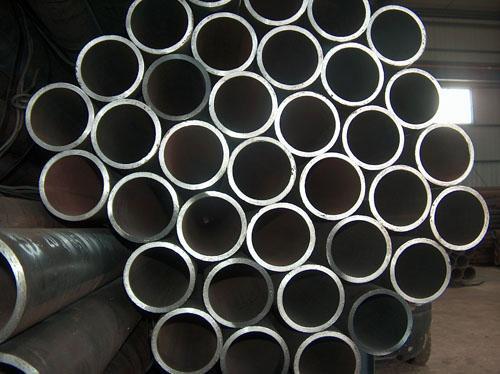ASTM A214 Tube Equivalent Material
The ASTM A214 standard covers electric-resistance-welded carbon steel heat-exchanger and condenser tubes. The tubes are intended for use in boilers, heat exchangers, and condensers. The equivalent standards for ASTM A214 tubes can vary depending on the specific requirements and applications. Some common equivalent standards may include:
1. ASTM A214 Tube Manufacturing Process:
ASTM A214 is a specification for electric-resistance-welded (ERW) carbon steel heat-exchanger and condenser tubes. These tubes are primarily used in boilers, heat exchangers, and condensers for conveying steam, water, or gas.
1.1. Raw Material Selection: The manufacturing process begins with the selection of high-quality carbon steel coils or plates. These raw materials must meet the chemical composition and mechanical property requirements specified in ASTM A214.
1.2. Strip Uncoiling: The selected steel coils are uncoiled to form flat strips of the required width.
1.3. Shearing and End Trimming: The flat strips are then sheared to the desired length and trimmed to ensure clean and straight edges.
1.4. Forming: The flat strips are passed through a series of forming rolls to shape them into a cylindrical tube. This process may involve several passes to achieve the desired diameter and wall thickness.
1.5. Welding: The edges of the formed strip are heated and then welded together using electric-resistance welding (ERW) techniques. This welding method involves applying pressure and electrical current to the edges of the strip, causing them to fuse together.
1.6. Sizing: After welding, the welded tube undergoes sizing to achieve the final dimensions specified in ASTM A214. This process may involve passing the tube through a series of rollers or dies to ensure accurate sizing and roundness.
1.7. Cooling and Straightening: The welded and sized tubes are then cooled and straightened to remove any residual stresses and ensure dimensional accuracy.
1.8. Cutting to Length: The straightened tubes are cut to the specified lengths using saws or other cutting equipment.
1.9. Heat Treatment (Optional): Depending on the application requirements, the tubes may undergo heat treatment processes such as annealing or stress relieving to improve their mechanical properties and machinability.
1.10. Testing and Inspection: The finished tubes undergo various tests and inspections to ensure they meet the requirements of ASTM A214. These tests may include dimensional inspection, visual inspection, mechanical testing, and non-destructive testing methods such as ultrasonic testing or eddy current testing.
1.11. Surface Treatment (Optional): Finally, the tubes may be subjected to surface treatment processes such as pickling, passivation, or coating to protect them from corrosion or improve their appearance.
1.12. Packaging and Shipping: Once the tubes pass all quality control checks, they are packaged according to customer requirements and prepared for shipping to their final destination.
Throughout the manufacturing process, strict adherence to ASTM A214 specifications is crucial to ensure the quality and performance of the finished tubes in demanding applications such as boilers and heat exchangers.
2. ASTM A214 Tube Chemical Composition:
- The typical chemical composition of the carbon-manganese steel used in ASTM A214 tubes includes elements like carbon, manganese, phosphorus, and sulfur.
|
Element |
ASTM A214/ASME SA214 |
|
C |
0.18 max. |
|
Mn |
0.27 - 0.63 |
|
P |
0.035 max |
|
S |
0.035 max |
- The composition is designed to provide suitable properties for heat-exchanger and condenser applications.
3. ASTM A214 Tube Mechanical Properties:
|
Element |
ASTM A214/ASME SA214 |
|
Tensile Strength KSI (MPa) |
47[325] |
|
Yield Strength KSI (MPa) |
26[180] |
|
Elongation min. % |
≥35% |
|
Hardness |
≤72 HRB |
4. ASTM A214 Tube Size Range and Dimensions:
- ASTM A214 tubes are available in various sizes, and the dimensions are specified to meet the requirements of different heat transfer applications.
- Tubes may come in different lengths, diameters, and thicknesses.
5. ASTM A214 Tube Equivalent Standards:
1. DIN 17177 Materials:
- St 37.8: This is a carbon steel material suitable for low and medium pressure boilers.
- St 44.4: Another carbon steel grade with improved properties, often used in high-temperature applications.
- DIN 17177 Application:
- DIN 17177 tubes are employed in boiler installations, chemical industry, and pressure vessel construction.
2. EN 10217-1 Scope:
- EN 10217-1 covers welded steel tubes for pressure purposes.
- EN 10217-1 Application:
- These tubes are used in various pressure applications, making them suitable for industries where pressure vessels are involved.
6. ASTM A214 Tube Additional Considerations:
-Testing and Inspection:
- Tubes may undergo various tests, including flattening tests and flaring tests, to assess their quality.
- Non-destructive electric tests are often conducted to detect imperfections or defects in the weld.

ERW ASTM A214 Tube

